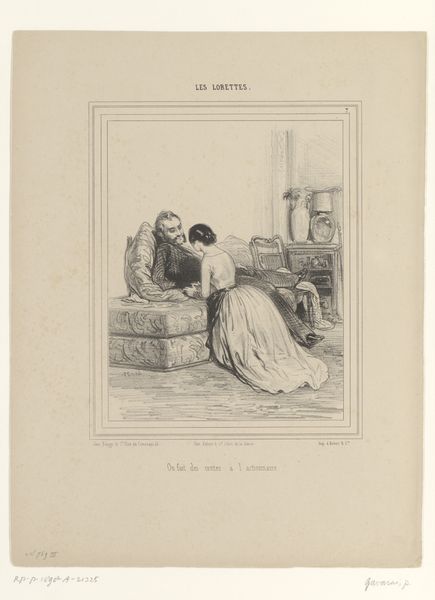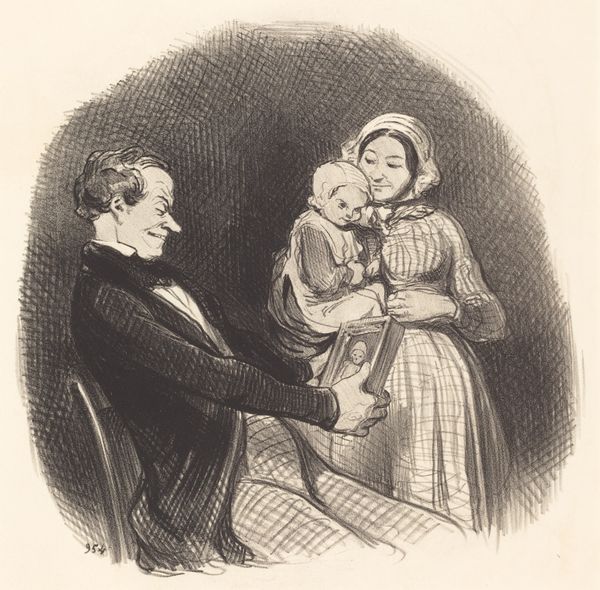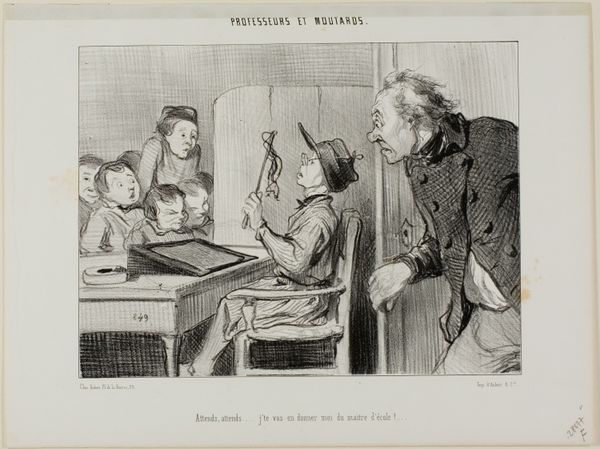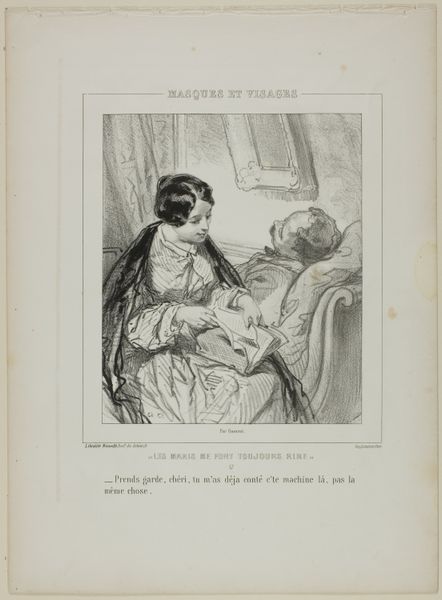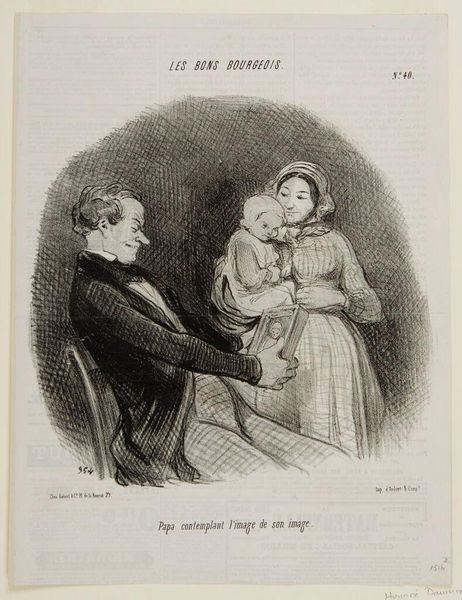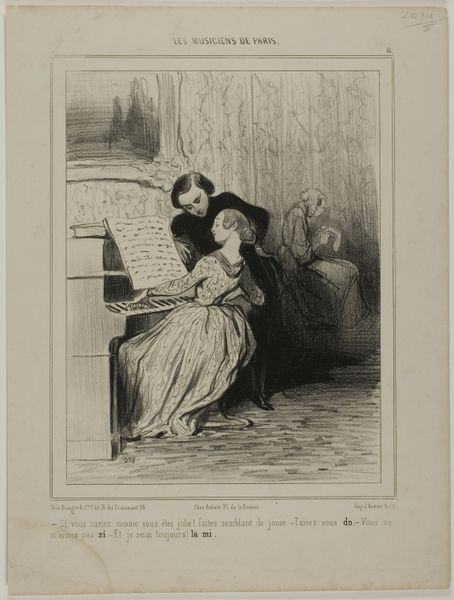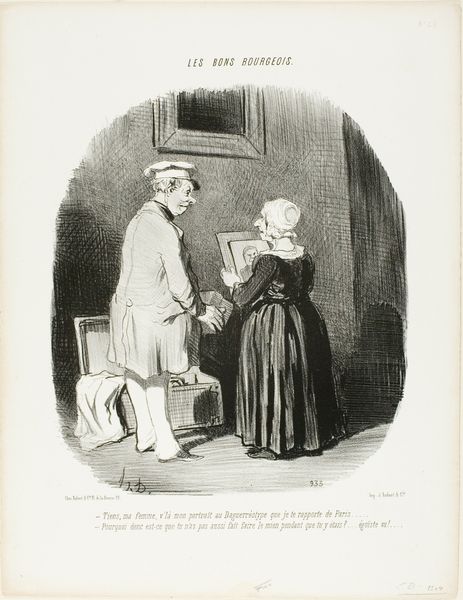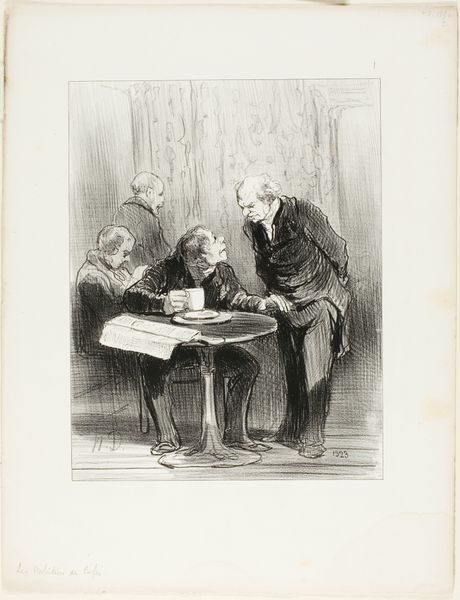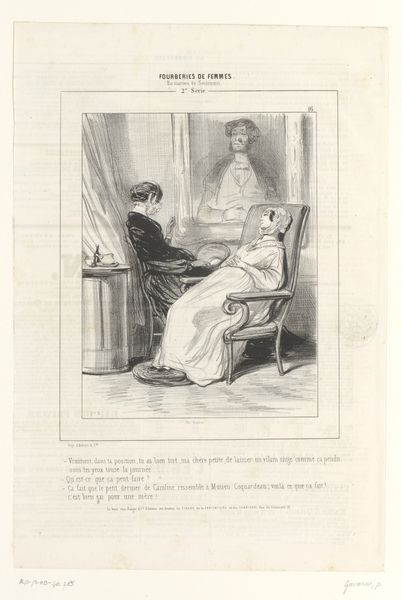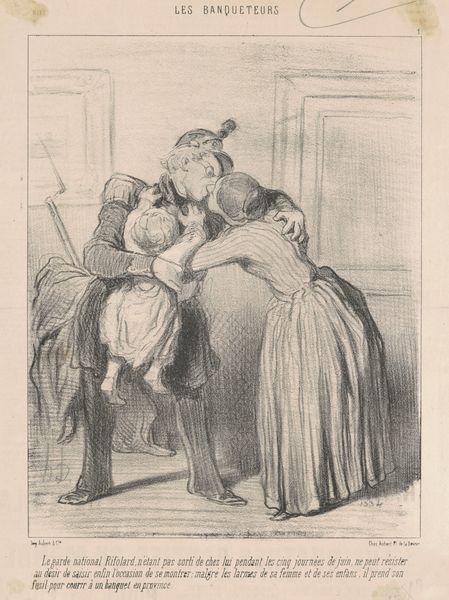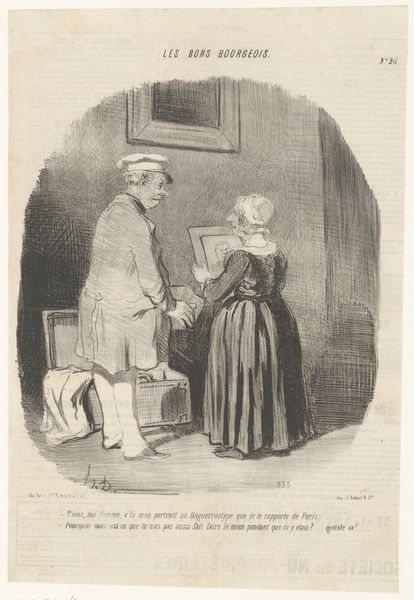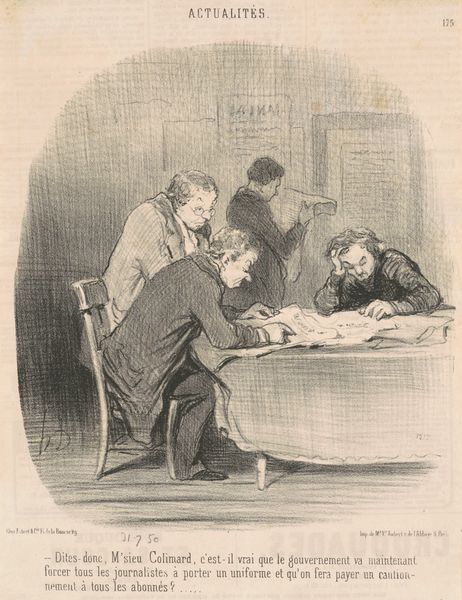
The Subscriber and His Newspaper. “- Listen darling, the first three columns of my morning paper are completely empty! It seems that they must have really said some nasty things. - May quite well be, but now that you mention it, to write nothing at all, I find that even more nasty!,” plate 2 from Caricatures Du Jour 1842
0:00
0:00
drawing, lithograph, print, paper
#
portrait
#
drawing
#
lithograph
# print
#
caricature
#
paper
#
pencil drawing
#
romanticism
#
genre-painting
Dimensions: 166 × 233 mm (image); 248 × 332 mm (sheet)
Copyright: Public Domain
Editor: This is Honoré Daumier’s lithograph, “The Subscriber and His Newspaper,” from 1842. It's striking how contemporary the scene feels—a couple sitting at a table, intensely engaged with their news. What stands out to you? Curator: The beauty of Daumier is how he captures the everyday to expose deeper societal truths. It's not just a genre scene, but a commentary on the power, or perceived power, of the press and its relationship to its readership. Consider the original French title "Caricatures du Jour". Daumier understood that even the omission of news – the “empty columns” – carries a weight. Editor: So it's not just about what is printed, but also about what's *not* printed? Curator: Precisely! Think about censorship, think about narratives controlled by those in power. What isn’t being said? What voices are being silenced? This image reflects a specific historical context, the increasing role of the press in shaping public opinion and, critically, in a period of political and social unrest, the deliberate manipulation of information, that also resonates today. Editor: That’s fascinating. I hadn't considered it in terms of censorship. It seemed more like a critique of obsessive news consumption. Curator: It's both. Daumier's brilliance lies in that layered reading. He invites us to question not just the media itself, but our own reliance on it and how easily it is to be misled by both acts of commision and of omission. The image reflects on how easily people place faith in media, regardless of whether its empty or full. Editor: This really changes how I see the work. Thank you for opening my eyes to that historical and social context. Curator: Absolutely, and hopefully you can extend those questions when encountering other works, especially those with overtly 'neutral' subjects.
Comments
No comments
Be the first to comment and join the conversation on the ultimate creative platform.
